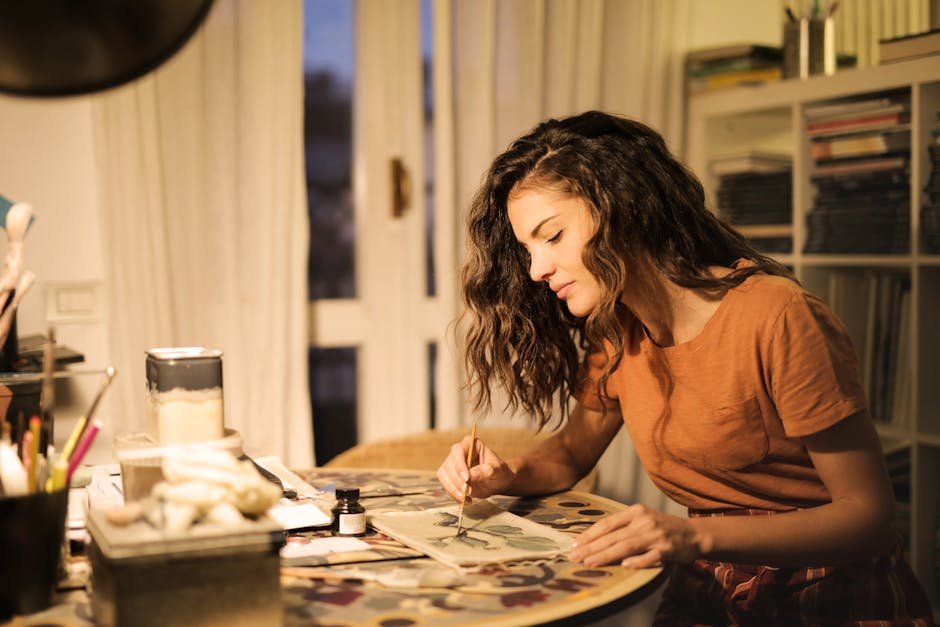From Tree to Treasure: The Journey of a Piece in Our Woodcraft Gallery
Introduction to Our Woodcraft Gallery Journey
Welcome to the start of an inspiring journey from tree to treasure. Our Woodcraft Gallery showcases the transformation of simple wood into stunning pieces of art. Think about it: every piece in our gallery has a story, starting as a mere tree, only to be shaped, chiseled, and polished into a masterpiece. This journey isn't just about cutting wood and making something pretty. It's about seeing the potential in a raw resource, understanding its texture, grain, and very essence to craft it into an object, a piece of history, art, and emotion. We’re excited to walk you through every step, from selecting the perfect tree to the meticulous care and skill that turns that tree into a treasured piece in our gallery. So, let’s embark on this awe-inspiring voyage together, exploring the craftsmanship and passion behind every creation. Through this series, you'll gain a deeper appreciation for the art of woodcraft and the journey of each piece in our gallery, from tree to treasure.
The Origin: Selecting the Perfect Tree
Selecting the right tree is a craft in itself. Think of it as choosing the best ingredients for a gourmet meal. The type of tree, its age, and where it grew are key. Hardwoods like oak, walnut, pecan, hickory, and maple often make the cut because of their durability and beautiful grain. We hunt for logs from trees that lived long lives with lots knots and character. It's not just about beauty, though. The environment matters, too. Trees from the Urban Forests are our go-to. Each tree tells a story, and it's our job to turn that story into a masterpiece that lasts generations. This step sets the tone for the entire journey from tree to treasure.
The Art of Wood Preparation and Treatment
Before a piece of wood becomes a treasure in our gallery, it undergoes a transformation that's both an art and a science. It starts with selecting the right wood. Not all wood is equal. Hardwoods like oak and maple, known for their durability, are popular choices for furniture. Softwoods, such as cedar, are preferred for intricate detail. Once we've got the right wood, the preparation begins. The wood is first milled to size and then carefully kiln-dried. This can be done naturally by letting the wood dry over time and then finished in our vacuum kilns, which speeds up the process. The goal here is to remove moisture without causing cracks or warping.
After drying, the treatment phase ensures the wood lasts a lifetime and beyond. This involves processes like staining, which enhances the wood's natural color and grain, or sealing, which protects it from moisture and wear. Sometimes, we also apply special finishes to make the wood resistant to scratches or fading from sunlight. Each piece tells a story, not just through its design but through these preparation and treatment steps. The journey from tree to treasure is a careful blend of tradition and technology, ensuring each piece in our woodcraft gallery is seen, felt, and experienced.
Carving: From Rough Shapes to Fine Details
Carvers transform wood into art using different techniques, each fit for a stage in the creation process. It starts with roughing out, where the artist removes large wood chunks to form a basic shape. This step is about speed and efficiency and not yet about the details. Think of it as sketching the outline of a drawing before adding the fine lines. Next comes shaping, where the carver refines the form, starting to hint at the final piece's contours and features. This stage requires a more delicate touch and a keen eye for how the piece is taking shape.
After shaping, we move to detail, where the true personality of the piece emerges. Here, carvers add intricate patterns, textures, and features that define the artwork's character. Fine chisels, gouache, and other specialized tools come into play, allowing for precision work that brings the wood to life.
Lastly, finishing seals and protects the wood, enhancing its beauty. This might involve sanding, applying oils, stains, or varnishes, each choice affecting the piece's final appearance and feel.
From the first rough cut to the last polish, each step in the carving process is critical. The carver’s tools, chosen technique, and the wood influence the journey from tree to treasure.
Tools of the Trade: Craftsmen and Their Instruments
In woodcraft, the craftsman's skill meets the quality of their tools. Basic yet essential, tools transform raw wood into intricate artworks. Chisels carve out details, saws cut shapes, and planes smooth surfaces. Advanced craftsmen might use lathes for shaping or routers for hollowing out wood. Each tool demands respect and mastery. Whether hand tools for that personal touch or power tools for speed and precision, the choice reflects the craftsman’s style and the piece’s demands. Essential care keeps tools sharp and ready, mirroring the craftsman’s dedication to their craft. Remember, behind every wooden masterpiece lies a simple yet profound truth: the right tools, wielded with skill and passion, make all the difference.
The Role of Creativity in Woodcraft
In woodcraft, creativity isn't just nice to have; it's the heart of every masterpiece. Think about it. Craftsmen see a simple tree - something so ordinary and see the extraordinary. They envision what others can't: a piece of furniture, a sculpture, or a decorative item that adds warmth and personality to a space. This vision requires creativity of the highest order. It's about seeing beyond the bark and into the soul of the wood, understanding its potential shapes, textures, and the stories it can tell in our homes or galleries. Creativity guides the craftsman's hands, transforming a raw, lifeless block into something full of life and beauty. Creativity is present in every step, whether it's choosing the right wood, considering how it will interact with its environment, or employing unique techniques to bring out its best features. This process elevates woodcraft from mere carpentry to an art form. Sure, tools and skills play a big part, but without creativity, all you'd have is wood, not the treasure it becomes.
Finishing Touches: Make Each Piece Unique
After a piece is shaped and sanded, it's time for the magic to happen. Finishing touches are what make each piece in our Woodcraft Gallery stand out. We use various techniques, each chosen to enhance the natural beauty of the wood and ensure the final product is not just a piece of furniture but a piece of art.
First, we've got staining. It deepens the wood's natural color and brings out the grain, making every swirl and whorl pop. Next, we have oil finishes, which sink in, nourish the wood, and give a soft, natural sheen that feels good to the touch. For pieces that need a bit more protection, we use lacquer. It creates a hard, durable surface that resists scratches and stains, perfect for daily use.
Then, there's the technique of wood burning. This isn't for every piece, but when used, it adds unique patterns and depth, truly personalizing the work. Lastly, we sometimes apply gold or silver leaf accents for that extra wow factor – a touch of luxury that makes the piece truly one of a kind.
From Our Workshop: The Transition
Each piece starts its journey in our workshop, where craft meets creativity. Our artisans select the finest wood, shaping it with expertise and attention to detail. It's a process of transformation from raw material to refined beauty. Once complete, these pieces make their way to your home, ready to captivate and inspire. This transition from "log to legacy" is a story of passion, precision, and the love of woodcraft. In the showcase, each piece finds its audience here, connecting stories and histories through the grain of the wood. Every item, now not just a piece of furniture or art, carries a legacy from our workshop to your space, making the journey from tree to treasure truly remarkable.
The Significance of Each Piece
Every piece in our portfolio tells its own story. From the moment a tree is selected in the forest to the skilled hands that shape it, each step adds to its uniqueness and value. The wood's grain, color, and texture are influenced by the environment where the tree grew, making no two pieces alike. Craftsmen pour their expertise, creativity, and passion into transforming raw wood into stunning, functional art. This process often involves traditional techniques passed down through generations, highlighting the cultural significance and preserving a piece of history. When you admire a piece in our gallery, you're not just looking at an object of beauty; you're experiencing a blend of nature's artistry and human craftsmanship. This connection makes each piece significant, turning everyday items into treasures with stories worth telling.
How to Care for Wood Furniture: Tips and Tricks
Caring for wood isn't just about keeping it clean; it's about protecting its beauty and extending its life. Here's a simple guide to help you maintain your wooden treasures. First, avoid exposing your wood furniture to direct sunlight or extreme temperatures, which can cause fading and warping. Dust them regularly with a soft, dry cloth to avoid buildup that can scratch the surface. Use a damp cloth for deeper cleaning, but dry the piece immediately to prevent water damage. If the wood surface looks dull, apply a thin layer of natural wax and buff gently to regain its sheen. Steer clear of harsh chemicals or abrasive cleaners; they can do more harm than good. Following these straightforward tips will keep your woodcrafts looking as stunning as the day you brought them home.

